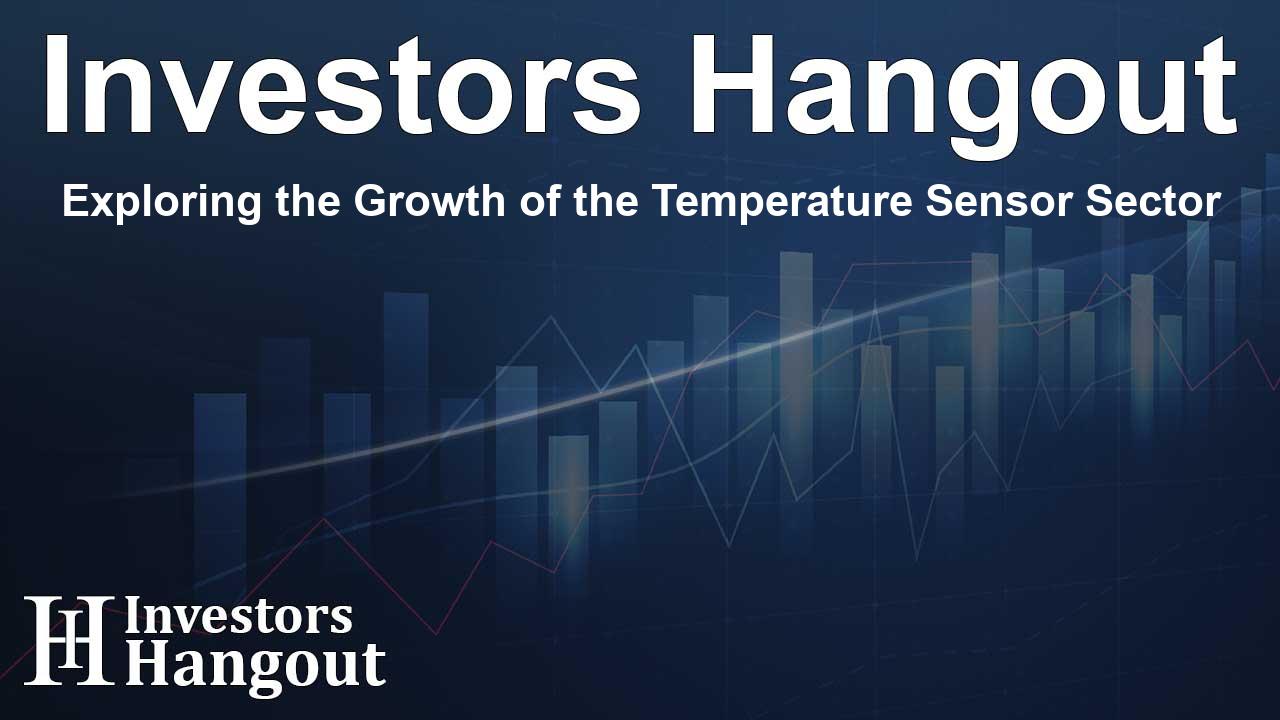Exploring the Growth of the Temperature Sensor Sector

Understanding the Temperature Sensor Market
The temperature sensor market is anticipated to experience substantial growth, with projections indicating an increase from USD 7.43 billion to USD 8.94 billion between the coming years. This translates to a compound annual growth rate (CAGR) of approximately 3.8%. Temperature sensors play a crucial role in various fields such as healthcare, automotive, and consumer electronics, where they are essential for monitoring and controlling temperatures in machines and equipment.
Categories and Applications of Temperature Sensors
Temperature sensors are diverse, and their applications are widespread across industries. Non-contact temperature sensors, for instance, measure surface temperatures without any direct contact, making them ideal for small or hazardous objects. This category includes infrared and fiber optic sensors, which excel in quick, precise measurements. Their growing adoption reflects the demand for efficient monitoring solutions across industrial applications.
Types of Temperature Sensors
There are two primary categories of temperature sensors: contact and non-contact types. Contact sensors come in direct contact with the medium they are measuring, while non-contact sensors gauge the temperature from a distance. Non-contact sensors show promise for a higher growth rate due to their applications in environments where direct contact could pose risks.
Digital versus Analog Temperature Sensors
Focusing on the output type, digital temperature sensors are gaining traction due to their capabilities in various scenarios. They offer advantages such as storing setpoint values in non-volatile memory, making them suitable for remote applications, especially in the medical and aerospace industries. In contrast, analog sensors still hold their ground in specific low-cost applications.
Market Trends and Innovations
As technology progresses, so does the temperature sensor market. There's been a notable increase in the investment directed towards research and development in IoT and related technologies. Businesses are recognizing the need for advanced sensors that can operate with greater precision and efficiency. Key players in this sector are continually innovating to address the stringent requirements for performance in advanced applications.
Regional Market Snapshot
The Asia Pacific region is expected to dominate the temperature sensor market. The presence of robust manufacturing capabilities in countries like China, Japan, and South Korea bolsters the industry. The burgeoning electrical and electronics sector in Asia is directly contributing to the demand for temperature sensors, highlighted by the strategy of various multinational corporations to optimize production costs by outsourcing manufacturing to this region.
Challenges Ahead
Despite the promising outlook for the temperature sensor market, challenges lie ahead. Stringent performance requirements for advanced applications pose a significant hurdle for manufacturers looking to innovate while maintaining quality and reliability. Companies must navigate these challenges while also remaining aware of the rapidly changing technological landscape.
Opportunities for Growth
The ongoing shift towards automation and the rising use of IoT devices present unprecedented opportunities for companies in this space. Investments in research and technological advancements are likely to open new avenues in the temperature sensor market.
Key Players Shaping the Industry
Several key players dominate the global temperature sensor market, including Honeywell International Inc., TE Connectivity, and Texas Instruments. Their continued efforts in enhancing product offerings and exploring innovative technologies help maintain competitive advantages. This sector is poised for future growth as companies adapt to changing market demands and seek efficiencies through advanced sensor technologies.
Frequently Asked Questions
What drives the temperature sensor market's growth?
The growth of the temperature sensor market is primarily driven by rising demand across various industries, including healthcare and consumer electronics, alongside advances in IoT technology.
What are the main types of temperature sensors?
Temperature sensors are primarily categorized into contact and non-contact types, with non-contact sensors like infrared sensors rapidly gaining market share due to their application versatility.
Why is the Asia Pacific region significant for this market?
The Asia Pacific region holds a significant share due to its strong manufacturing base and growing electronics industry, making it a pivotal location for temperature sensor production and innovation.
What are the challenges faced by temperature sensor manufacturers?
Manufacturers contend with stringent performance standards for advanced applications and must navigate a landscape of rapid technological advancements.
What future opportunities exist in the temperature sensor market?
With increasing automation and investments in IoT research, there are substantial opportunities for companies to expand their product lines and enhance sensor capabilities to meet emerging market needs.
About The Author
Contact Evelyn Baker privately here. Or send an email with ATTN: Evelyn Baker as the subject to contact@investorshangout.com.
About Investors Hangout
Investors Hangout is a leading online stock forum for financial discussion and learning, offering a wide range of free tools and resources. It draws in traders of all levels, who exchange market knowledge, investigate trading tactics, and keep an eye on industry developments in real time. Featuring financial articles, stock message boards, quotes, charts, company profiles, and live news updates. Through cooperative learning and a wealth of informational resources, it helps users from novices creating their first portfolios to experts honing their techniques. Join Investors Hangout today: https://investorshangout.com/
The content of this article is based on factual, publicly available information and does not represent legal, financial, or investment advice. Investors Hangout does not offer financial advice, and the author is not a licensed financial advisor. Consult a qualified advisor before making any financial or investment decisions based on this article. This article should not be considered advice to purchase, sell, or hold any securities or other investments. If any of the material provided here is inaccurate, please contact us for corrections.
